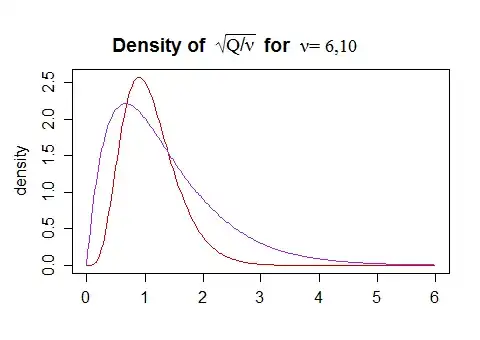Let's say you have the following basic one-sample t-test, taken from Khan Academy:
A neurologist is testing the effect of a drug on response time by injecting 100 rats with a unit dose of the drug, subjecting each to neurological stimulus, and recording its response time. The neurologist knows that the mean response time for rats not injected with the drug is 1.2 seconds. The mean of the 100 injected rats' response times is 1.05 seconds with a sample standard deviation of 0.5 seconds. Do you think that the drug has an effect on response time?
When reviewing inferential stats, I was rethinking an issue I didn't understand with t-testing. What if the sample standard deviation for rats injected with a drug is completely different than the standard deviation of the population of rats who are not injected with the drug?
It would make sense that this is a real possibility. Maybe the drug clusters everyone around the sample mean (i.e. every rat who takes the drug gets really close to 1.05 seconds), and the sample standard deviation is half that of the standard deviation of the population of non-injected rats. I could see this happening if you were measuring how an athletic drink affects sprint time, and the treatment sample (people who had this drink) has a very small standard deviation compared to the population (people who did not have the drink) because everyone who drinks it gets around the same very fast sprint time.
Why can we then use the treatment-group sample standard deviation to estimate the control-group population standard deviation if they have a chance of being very different from each other? Or do we just assume they aren't?
